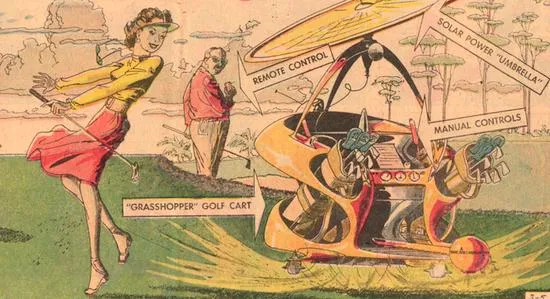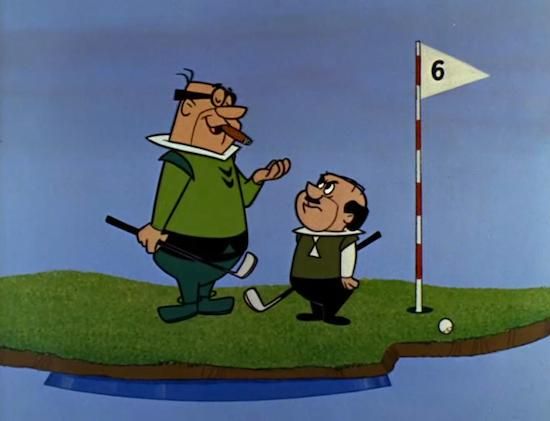A Futuristic Golf Game in the Sky
In the year 2062, you really, really don’t want to hit a ball out of bounds
This is the twelfth in a 24-part series looking at every episode of “The Jetsons” TV show from the original 1962-63 season.
The 12th episode of “The Jetsons” originally aired in the U.S. on December 9, 1962 and was titled “Astro’s Top Secret.” Personally, this is my least favorite episode in the entire series. It has odd pacing, is visually uninteresting, and the animation seems abnormally sloppy.
The episode opens with a voiceover introducing us to George and Astro as having a relationship that’s a bit strained at the moment. We’re then shown Mr. Spacely and Mr. Cogswell — two business rivals playing a game of golf together — as Spacely insists that he’s going to put Cogswell out of business. Later, Cogswell sends one of his employees to spy on George who Cogswell believes must be working on the project that will help Spacely Sprockets put Cogswell Cogs out of business. Through a series of misunderstandings, the corporate espionage leads Cogswell to believe that George has developed an anti-gravitational device that allows George’s dog Astro to fly. Cogswell interrogates Astro but can’t seem to figure out what makes the soaring pooch fly. In the end, it’s revealed to both Cogswell and Spacely that Elroy’s flying car toy was the source of Astro’s anti-gravitational feats, and through even more misunderstandings the status quo is simply restored by conclusion of the episode.
As I mentioned, this is one of my least favorite episodes but I think there’s a lot of interesting technology going on with the golf game between Cogswell and Spacely. Their futuristic golf game game features flying golf carts, expandable club heads, hovering greens and robotic tees.

As is often the case with “The Jetsons” the forward-thinking technology has roots in the futurism of the day. In the case of Mr. Spacely’s hovering golf cart, we find similar technology in the newspapers of the early 1960s. The March 5, 1961 edition of Arthur Radebaugh‘s Sunday comic strip “Closer Than We Think” looked at the future of golf, augmented by push-button technology:
To save steps for the par-shooter of the future, a Tokyo firm has designed a remote-control golf cart, based on the same principles that permit a television viewer to change channels without leaving his chair. Once our golfer arrived at the edge of a green or bad rough, he would walk to the ball, take his shot, and then summon his cart by voice or button as he moved along toward the nineteenth hole.
Still another advance, lacking in the Japanese concept, lies ahead. It’s the “ground effect machine” principle, through which the cart could float on a cushion of air instead of riding on the turf. No more fairway flattening in the future!

Golf in the U.S. is often associated with prosperity and the kind of leisure activity that stodgy old men love. So it’s fitting that two titans of business would be playing it well into the 21st century. Later in the 1960s golf would be used in promotional films to demonstrate that in the future even the common man would be able to zip off to distant resorts and play golf whenever he pleased. Unfortunately for George, only his boss Mr. Spacely would enjoy “a good walk spoiled” whenever he pleased.
/https://tf-cmsv2-smithsonianmag-media.s3.amazonaws.com/accounts/headshot/matt-novak-240.jpg)
/https://tf-cmsv2-smithsonianmag-media.s3.amazonaws.com/accounts/headshot/matt-novak-240.jpg)